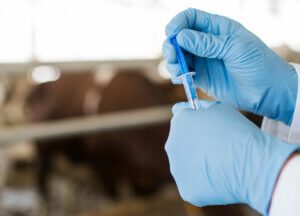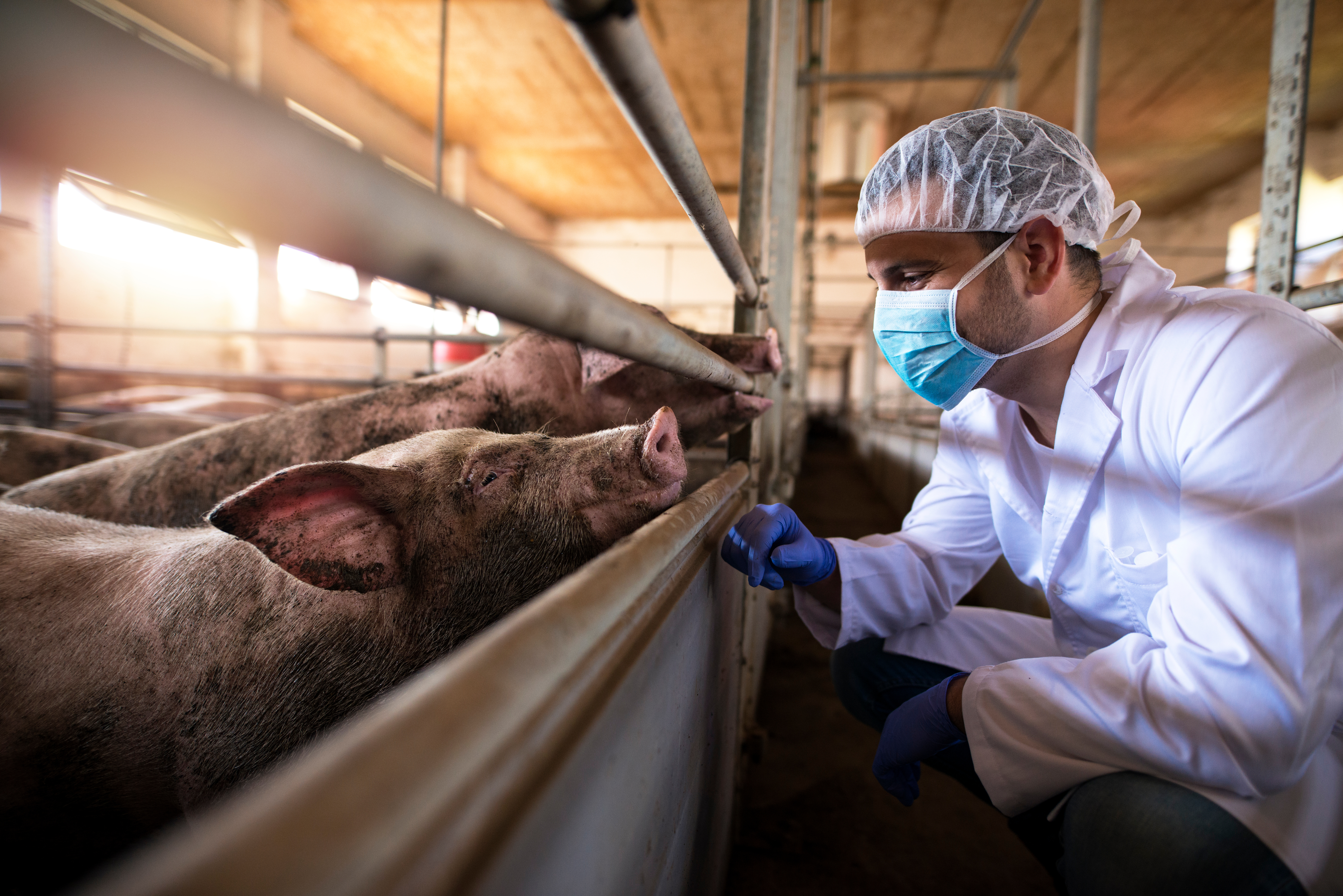21 de October de 2024
Limiting the use of antibiotics on livestock farms
The excessive and inappropriate use of antibiotics for both human and veterinary medication over the last decades is the cause of new societal concerns and challenges in animal health, human health and impact on the environment. Excessive consumption of antibiotics has led to the development of resistant bacteria, which can be transferred to humans through consumption of animal products, direct contact with animals, and the environment, making bacterial infections more difficult to treat.
Antibiotic resistance involves the failure to eliminate a microorganism that causes an infectious disease by becoming resistant to the antibiotic to which it was originally vulnerable. When bacteria become resistant, conventional treatments become ineffective, infections persist and the risk of spreading resistance increases, involving people, animals, food and the environment. The problem is compounded by the fact that the rate at which bacteria become resistant to the antibiotics we use is far greater than the rate at which new antibiotics are being developed.

National Antibiotic Resistance Plan (PRAN)
To address this situation, the National Antibiotic Resistance Plan (PRAN)was created in 2014. It is a strategic and action plan which aims to reduce the risk of selection and dissemination of antibiotic resistance and, consequently, to reduce the impact of this problem on human and animal health, while preserving the efficacy of existing antibiotics in a sustainable manner.
Among the multiple strategic lines defined by the PRAN to achieve its objectives, prevention is particularly relevant. The main objective of this line of work is to reduce the need for antibiotic use by implementing disease prevention measures.
Prevention
In animal health, disease prevention and control at farm level brings considerable benefits for production, food safety and security, public health, animal welfare and, consequently, the market and the economy.
In this context, strategies for the improvement of hygiene measures are key, as well as the development of standards to reduce the risk of infection and transmission of resistant organisms.
In order to maximise the effectiveness of prevention measures, it is important to improve the biosecurity mechanisms on the farm. Hygiene, management, surveillance, early detection and rapid response are key elements in preventing and controlling animal diseases.
Biosecurity
Biosecurity includes the set of infrastructure and management measures to prevent or reduce the risk of entry of infectious, contagious and parasitic diseases and their subsequent spread inside or outside the livestock farm.
Within the set of measures defined in a Biosecurity Plan for livestock farms, Cleaning and Disinfection of the facilities is one of the most important operations.

Cleaning and disinfection of livestock farms
After a batch of animals has been reared or fattened in a building, Cleaning and Disinfection of the building is the most effective method to ensure the elimination of microorganisms that could compromise the health of the next batches. This process becomes even more important when the farm has suffered from an infectious process during rearing. These infectious processes can be due to multiple causes: deficient or insufficient biosecurity measures, introduction of carrier animals, errors in prophylaxis, etc. The occurrence of infectious outbreaks leads to significant economic losses and a potential risk to public health.
The best control measures will always be those aimed at preventing the disease, but if an outbreak does occur, a complete and detailed review of all the measures in the farm's Biosecurity Plan will be necessary, investigating the possible routes of entry.
During the sanitary vacuum of the livestock facility we will focus on 3 basic aspects of disease control: cleaning, disinfection and vector control. These steps are necessary to achieve an adequate level of farm health.
Once a building with production animals is emptied, the first step is the removal of coarse organic matter. This is achieved by using common mechanical methods of dry sweeping to collect the coarser faeces, followed by rinsing with water using a high-pressure washer.
Cleaning is then carried out with alkaline detergents, preferably applied in the form of foam using high-pressure cleaners.
Within the wide range of detergent products, PROQUIMIA has the alkaline foaming detergent VIXFOAM, specially designed to achieve a greater dragging of the dirt thanks to its ultra-resistant foam that, applied at high pressure, maximises the contact time with the dirt.
After a time of action, rinse. Periodically, acid detergents shall also be used to remove inorganic matter in the form of scale in coolings and troughs.
The cleaning process removes macroscopic dirt and a high percentage of microorganisms.
The surfaces shall then be disinfected.
Proquimia's range of disinfectant products
PROQUIMIA has a wide range of disinfectant products, duly registered as pesticide/biocide products for the livestock environment, and which meet the criteria for biocidal efficacy according to EN standards established by Regulation (EU) 528/2012 on Biocidal Products:
- ASEPTIL ) - based on quaternary ammonium.
- AMBISEP HP - based on quaternary ammoniums and glutaraldehyde.
- ASEP DAP MOUSS - based on peracetic acid.
In terms of application, products applied in the form of foam are currently the most widely used, due to their low consumption and high permanence on the surface. Spraying, fogging or thermal fogging products can also be used.
In order not to spread pathogenic microorganisms throughout the farm, it is of vital importance to also disinfect the utensils used.
After disinfection of the facilities, it is usual to re-enter them for maintenance of the enclosure or to prepare the facilities for the entry of animals (preparation of feeders, drinkers, spreading of bedding, etc.). Therefore, after the entry of the personnel, a second disinfection must be carried out, which can be done with a fumigant product such as those used in silos.
When choosing cleaning and disinfection products, in addition to their efficacy, their hazard level must also be assessed in order to ensure maximum safety for the personnel involved.
At the same time, it will be essential to implement a plan to control vectors (insects) and rodents, in order to minimise the risks of spreading the diseases that these organisms can cause.
Finally, the correct cleaning and disinfection of the water circuits, as well as the disinfection of the animals' drinking water, are also very important aspects to be considered in order to guarantee maximum hygienic conditions on the farm.
Conclusions
In view of the growing health concerns caused by the increasing resistance of microorganisms to antibiotics, disease prevention and control measures on livestock farms are the most effective mechanisms to minimise the risk of transmission.
By rigorously applying all the preventive measures established in the Biosecurity Plan, with special emphasis on the Cleaning and Disinfection protocols, the risk of disease entry or recontamination will be minimised, while at the same time reducing the antibiotic consumption rate of the farm.
PROQUIMIA, thanks to its more than 50 years of experience in the hygiene sector, provides support throughout the process of design and implementation of the Biosecurity Plan, offering personalised advice for the correct selection of the most suitable Cleaning and Disinfection products, in order to use them effectively and safely.
Do you want more information?
We help you
In accordance with Regulation 2016/679 (GDPR) the basic information on personal data protection is provided below:
- Data controller: PROQUIMIA, S.A.
- Purpose of processing: Managing the sending of information, resolving queries and/or collecting data for possible business relationships.
- Legal Basis: Consent of the person concerned
- Recipients: No data will be transferred to third parties, unless this is legally obliged.
- Rights: Access, rectification, deletion, opposition, limitation, portability and presentation of claims.
- Additional information: Additional and detailed information on Data Protection can be found on our website: Privacy policy



